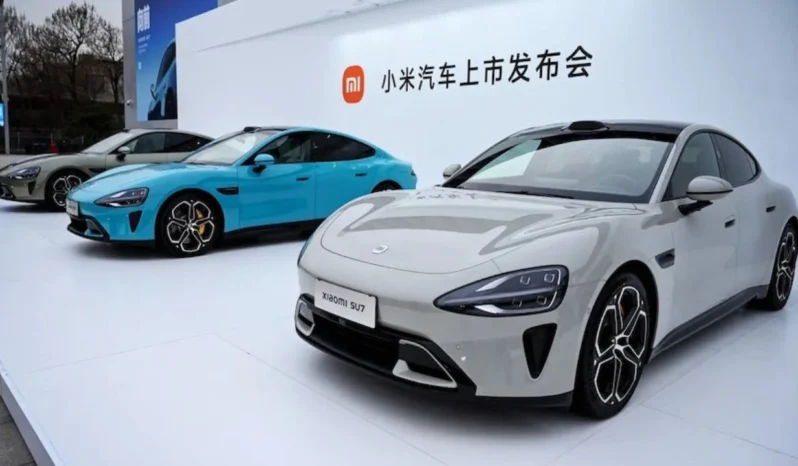Xiaomi puts itself in the hearts of many more tech-savvy customers with its newest electric vehicle, the Speed Ultra 7 (SU7). The model marks a bold expansion beyond its deep roots in consumer electronics and represents the first of its electric vehicles to debut in a very competitive market. With cutting-edge technology, top-shelf performance, and a price point, an otherwise expensive play is affordable to all. As the auto world is watching tech companies make the shift into EVs, SU7 is setting a benchmark in connectivity, sustainability, and accessible high performance.
Xiaomi CEO Lei Jun envisioned a very bold vision, “In the next 15 to 20 years, working hard, we will be one of the world’s top five automakers.” This ambition goes a long way to affirm that Xiaomi is sure about the transformation it brings in terms of high performance, smart technology, and sustainability for the EV market.
Speed Ultra 7 Key Specifications
The Xiaomi SU7 comes in two models, the Rear Wheel Drive (RWD) version and the more potent All Wheel Drive (AWD) variant, which targets both power and efficiency. Each model brings the following:
| Feature | RWD Variant | AWD Variant |
| Battery Capacity | 73.6 kWh | 101 kWh |
| Horsepower | 295 bhp (220kW) | 673 bhp (495kW) |
| Torque | 400 Nm | 838 Nm |
| Acceleration (0-100 km/h) | 3.5 seconds | 2.78 seconds |
| Top Speed | 220 km/h | 265 km/h |
| Range | Upto 668 Km/charge | Upto 800 Km/charge |
| Dimension | 4997 x 1963 x 1455 mm | 4997 x 1963 x 1455 mm |
| Seating Capacity | 5 | 5 |
| Price | ¥215,900 yuan | ¥299,900 yuan |
Performance and Design: Xiaomi’s Signature Tech-Centric Approach
Xiaomi SU7 looks sleek and futuristic in appearance. It is appreciated by tech-savvy fans and ordinary users. Outside, aggressive, aerodynamic lines foretell great performance, it’s a spacious, comfort-and-style-fitted premium interior with all the careful attention. The RWD provides solid performance for most drivers of the R8, with its 295 BHP and 3.5 seconds time to 0-100 km/h. That option of a thrill on road comes with the AWD version, which accelerates in merely 2.78 seconds to reach 100 km/h, with an unprecedented output of 673 BHP that matches those of high-end brand offerings like Tesla and Porsche.
Speed Ultra 7: A Smart, Connected Driving Experience
The heartbeat of the vehicle’s cockpit is a Qualcomm Snapdragon 8295 chip powering a massive 16.1 inch, 3K touchscreen in the middle. These screens offer highly customizable applications and voice control making it easy to customize the experience for yourself. It has advanced driver assistance systems (ADAS) like lane departure warnings, blind spot detection, adaptive cruise control, and autonomous emergency braking. It integrates HyperOS, a technology unique to Xiaomi, a unified operating system across all its products. Enabling seamless connectivity between Xiaomi smartphones and the SU7.
su_column=”1/1″]
Also Read: BYD eMAX 7 Price: Is The Premium Price of ₹26.90 Lakhs Justified for This MPV?
[/su_column]
Speed Ultra 7 Defining New Market Standards
The reception was largely positive, as evidence would show that nearly 89,000 preorders flooded in within 24 hours of launch. After starting with promise, Xiaomi, from now on, has to manufacture in volumes while maintaining their quality of production. The facility in Beijing is estimated to produce about 200,000 pieces per annum. This should encourage them to quench the current consumption while strengthening their position with equal strength against the competitive EV market as a force.
Ford CEO Jim Farley recognised that “Technology firms could be a player in the market and thus put pressure on the old guard of carmakers to be more aggressive in innovation.”
ELCTRIK Speaks
This marks the foray of the company into the automobile sector. Still, more importantly, it is a new avatar of the way EVs are expected to be looked at by technology companies. As the world moves towards greener mobility solutions, the Xiaomi SU7 is a preview of what may be the future of tech-enabled transport. It is thrilling, connected, and sustainable enough to challenge industry norms, thus creating a new standard of possibilities. But can Xiaomi continue that until it shakes up the market?






